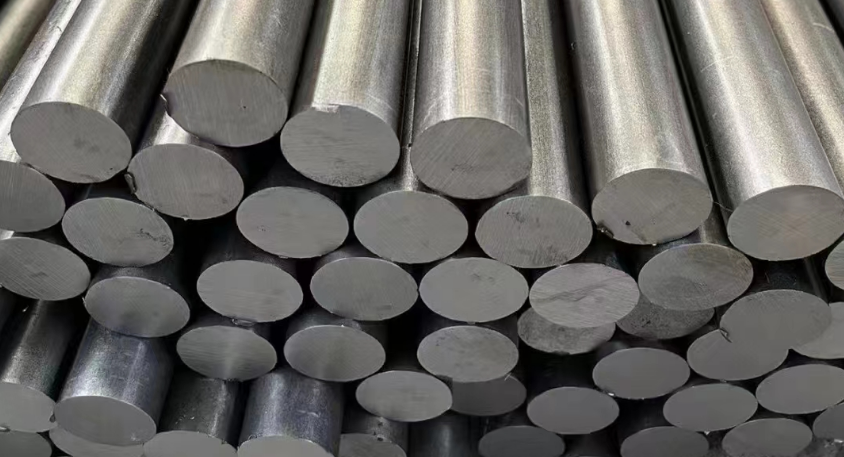In the realm of metallurgy, stainless steel alloys occupy a preeminent position due to their excellent corrosion resistance and mechanical properties. Among these alloys, 17-4 PH vs Acero inoxidable 410 are two commonly encountered grades, each with its unique characteristics and applications. As a seasoned expert in the field of metal materials from Sino de aceiro inoxidable, I am well-versed in the nuances that differentiate these two stainless steel grades.

17-4 PH vs aceiro inoxidable 410 - Cal é a diferenza?
Let’s delve into the intricacies of 17-4 PH stainless steel. This alloy, also known as UNS S17400, is a precipitation-hardened martensitic stainless steel that offers high strength and good corrosion resistance. The “17-4” in its name refers to the approximate percentage of crômio (17%) e níquel (4%) in its composition, which are the primary alloying elements responsible for its corrosion resistance. The PH stands for “precipitation-hardened,” indicating the method used to increase its hardness and strength.
The precipitation-hardening process involves the formation of fine particles within the steel matrix, resulting in a significant enhancement in its mechanical properties. This hardening occurs through the addition of copper and other elements that form precipitates during heat treatment. The resulting microstructure endows 17-4 PH with exceptional strength, toughness, and fatigue resistance, making it suitable for high-stress applications.
Por outra banda, o aceiro inoxidable 410 é un aceiro inoxidable martensítico that contains a minimum of 11.5% chromium. It is not as corrosion-resistant as austenitic stainless steels like 304 or 316, but it exhibits good mechanical properties and is often used in applications where strength and wear resistance are paramount. The martensitic structure of 410 stainless steel gives it a higher hardness and strength compared to ferritic stainless steels, but it is less ductile and tougher to weld.
17-4 PH vs 410 Stainless Steel – Hardness and Strength
One of the key differences between 17-4 PH and 410 stainless steel lies in their hardness and strength. 17-4 PH, through its precipitation-hardening process, achieves significantly higher hardness and strength levels than 410 stainless steel. This makes 17-4 PH an excellent choice for applications that require exceptional mechanical performance, such as aerospace components, oil and gas exploration equipment, and high-performance fasteners.
17-4 PH vs aceiro inoxidable 410 - Resistencia á corrosión
Corrosion resistance is another area where these two alloys differ. While both are considered stainless steel and exhibit good corrosion resistance, 17-4 PH offers superior performance in more aggressive environments due to its higher chromium and nickel content. This enhanced corrosion resistance makes 17-4 PH suitable for use in chemical processing plants, marine environments, and other settings where exposure to corrosive elements is a concern.
17-4 PH vs aceiro inoxidable 410 - Soldabilidade
Weldability is another important consideration when comparing 17-4 PH and 410 stainless steel. 410 stainless steel, due to its martensitic structure, is generally more challenging to weld than austenitic stainless steels. The weldments often require post-weld heat treatment to relieve stress and prevent cracking. On the other hand, 17-4 PH, while also susceptible to welding-related issues like cracking and distortion, can be welded with proper preheat, interpass temperature control, and post-weld heat treatment.
17-4 PH vs aceiro inoxidable 410 - Custo
Cost is another factor that influences the choice between these two alloys. In general, 17-4 PH stainless steel is more expensive than 410 stainless steel due to its more complex alloying composition and the need for specialized heat treatment to achieve its desired mechanical properties. This cost difference can be significant in large-scale applications where material costs are a significant portion of the overall project budget.
Conclusión
In summary, 17-4 PH and 410 stainless steel, while both belonging to the family of stainless steel alloys, exhibit distinct differences in their composition, mechanical properties, corrosion resistance, weldability, and cost. 17-4 PH, with its precipitation-hardened structure and higher alloying content, offers superior strength, hardness, and corrosion resistance, making it suitable for high-performance applications. On the other hand, 410 stainless steel, with its lower cost and good mechanical properties, is often the choice for applications where strength and wear resistance are primary considerations.
Thank you for reading our article and we hope it can help you to have a better understanding of the differences between 17-4 PH vs 410 Stainless Steel. If you are looking for the 410 Stainless Steel supplier and manufacturer online now, we would advise you to visit Sino de aceiro inoxidable.
As a leading supplier and manufacturer of stainless steel products from Shanghai China, Sino Stainless Steel offers customers high-quality 410 stainless steel, chapas decorativas de aceiro inoxidable, tubos de aceiro inoxidable, tubos de aceiro inoxidable, tiras de aceiro inoxidable, bobinas de aceiro inoxidable, placas de aceiro inoxidablee barras de aceiro inoxidable a un prezo moi competitivo.
 :+86-18621535697
:+86-18621535697  :export81@huaxia-intl.com
:export81@huaxia-intl.com